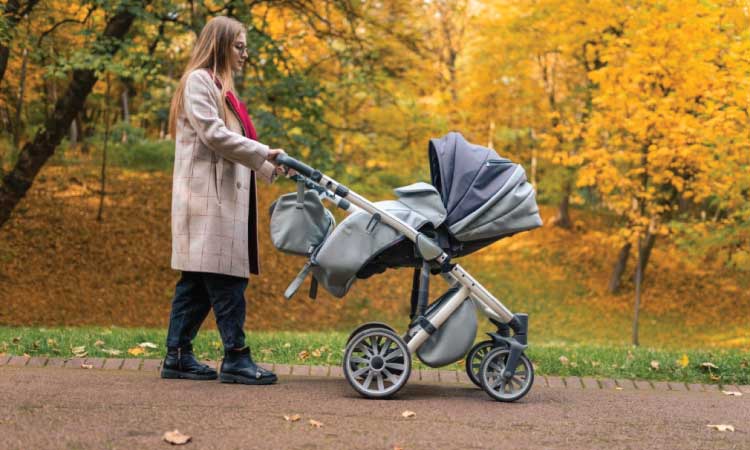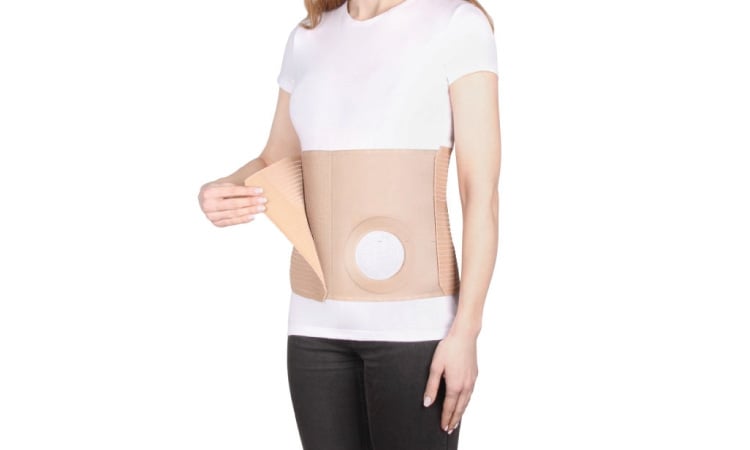The first six weeks after delivery is a crucial period as far as the health of the mother is concerned. After delivery, postpartum care is very important for your body to return to a pre-pregnant state. However, the postpartum period is also a time mother has to accept and get adapted to a lot of changes that are brought about by motherhood.
After delivery care for mother in India is generally based on the traditional Ayurvedic system. Post-delivery care in Ayurveda takes care of all aspects of the postpartum period. The care after normal delivery in India comprises a special postpartum diet, postnatal massages, herbal baths, and belly binding.
This blog provides some useful tips for after-delivery care.
12 Important Tips For After Delivery Care
Coping with everyday life after the birth of a baby has its own set of challenges, especially for new mothers. While it is important to devote time to take care of the baby, it is equally important to invest time for your own health as well in order to regain your health and strength. Inadequate after-delivery care can potentially bring about many health issues in the future.
According to our panel gynaecologist and a practising obstetrician Dr Ankita Patel Tayal, the following 12 important tips for after-delivery care will help you navigate this stage effectively.
1. Get plenty of rest
The most significant part of after-delivery care is taking plenty of rest. Getting enough rest after delivery helps with the fast healing of the uterus. During the initial weeks after delivery, make it a practice to sleep as much as you can. Bed rest after a normal delivery is as important as bed rest after the C section.
With a baby to take care of, it will not be possible for you to get 7 or 8 hours of uninterrupted sleep. Instead, it is better to follow the old saying “take a nap whenever the baby sleeps”. This is the practical way to get enough rest during the postpartum period. More than rest, sleeping has a healing property as well.
As we all know, wounds heal when new healthy tissues are formed. The growth and repair of tissues and cell regeneration are found to happen in the 3rd & 4th stages of sleep. The immune system also strengthens during this stage 1. . Therefore, the more uninterrupted sleep a new mother gets, the faster will be the tissue growth and faster will be the healing.
Now you know how crucial it is to have as much rest as possible after delivery for faster recovery of the body. Even if you don’t sleep, just relax rather than doing something too strenuous.
2. Physical activities

After delivery, the mother’s sufficient rest is important for fast healing, true. At the same time, reduced physical activities after delivery can also delay the recovery after delivery. We are not talking about vigorous exercises. It is off-limits at least during the initial weeks after a vaginal delivery. When it comes to a c-section, the time to start exercise entirely depends on the doctor’s decision. Starting exercising too early postpartum can have some negative effects.
On the other hand, you should start light physical activities like walking (let it be few steps inside the room or stroll around your house), a couple of days after delivery, no matter you had a normal delivery or a c section. All you have to do is listen to your body and stop walking when you feel so.
Light exercise after delivery helps with speeding up the recovery. Walking helps to boost blood circulation and re-establish muscle tone. It also helps to alleviate gas and constipation two common issues during the postpartum period. As soon as the mother is comfortably able, she can start postpartum Kegel exercises as well.
Note*; Climbing stairs should be avoided during the first week after delivery.
3. Focus on the right diet
Focusing on dietary guidelines without fail is a very important part of after-delivery care. When it comes to the postpartum diet, the first four weeks are considered a sensitive period. Therefore, it is always better to stick to home-cooked healthy meals during this period. Never try hotel food or junk food during this period.
A mother’s diet has a direct impact on the quality of milk and the health of the baby. It is important to make sure the postpartum diet contains food from all food groups. Here are some valuable tips on food during after delivery care:
- Ayurveda2 insists on adding oil and ghee to the postpartum diet for at least a month after the delivery. There is a strong reason for this. Pregnancy hormone (estrogen) is a lipid (fat) derived hormone. After delivery, thus, good quality fats are essential to regain hormonal balance and fast recovery
- Ayurveda also insists to include certain herbs and spices in the post-delivery diet. These spices help to get rid of gas and support lactation. Spices such as fenugreek, cumin, black pepper, cinnamon, ginger, and fennel are beneficial for resume digestion and promote lactation
- Spicy food during breastfeeding should be avoided
- Never add raw foods, salads, or cold meals that are difficult to digest to the postpartum diet menu. It is important to stay away from drinking anything cold also during this period. Make sure everything one eats or drinks during this period is warm or room temperature. Eating food that is hard to digest can increase the risk of gas issues
- It is highly beneficial to drink Turmeric milk (Golden Milk) during this period. The strong anti-inflammatory property of turmeric helps to reduce the risk of clogged milk ducts and mastitis
4. Take care of the vagina
After a vaginal delivery, experiencing general soreness and swelling around the vagina is quite normal. You can expect some pain and discomfort in the vaginal area for around a couple of weeks. The severity of pain and discomfort depends on tearing, the number of stitches, or other complications experienced during delivery.
How fast the recovery happens entirely depends on the severity of the tears. Some things you can do to help ease the pain include:
- Applying ice packs to the region is an easy, effective way to get relief
- Spraying Dermoplast helps to numb the region and thereby reducing the pain
- Placing witch hazel pads in your underwear helps to relieve itching and pain around the stitches
- Make it a practice to clean the perineum by pouring plenty of warm water over the vaginal area
- Making sitz bath part of the after delivery care will help to alleviate pain and other issues that accompany vaginal delivery
- Sitting on a soft cushion also helps relieve pressure on your bottom.
- Practicing Kegels helps to restore vaginal health
Related Reading: 9 Benefits of Kegel Exercise After Delivery
5. C- section after delivery care
C section is major surgery. It’s important to follow all the steps the doctor has instructed to keep the wound dry and clean to avoid the risk of infections. Dr Ankita Patel Tayal, MD OBGYN, recommends to examine the incision site every day after the dressing has been removed. This will help to detect any signs of infections promptly.
Some steps that contribute to fast recovery from the C section are:
- Gently wash the wound with warm water and thoroughly dry it with a towel
- If the incision site is under a tummy fold, pay more attention as it is not easy to keep this area dry
- Leave the wound site uncovered and allow to air dry
- Wear a loose cotton dress that doesn’t touch or irritate the wound
- For the first 6 weeks after the C section, strictly avoid driving, climbing stairs, or lifting anything heavier than baby
Related Reading: 11 Foods To Avoid After Cesarean Delivery – Know Them Here
6. Postpartum massage and herbal bath
Postpartum massage followed by an herbal bath is another important part of Indian after-delivery care. Specific hot oils are used to massage. Postpartum massage should always be done by experienced and expert hands.
Usually, the oil is left for 45 minutes and is followed by an herbal bath. Applying turmeric mixed with herbal oil all over the body is also part of after-delivery care in many parts of India.
Neem water (water in which neem leaves are boiled) is usually used for baths owing to its strong antiseptic and antibacterial properties. Some people also use various herbs infused water (specified in Ayurveda) for bathing. Instead of soap chickpea flour or green gram flour is used to wash off the oil.
Related Reading : Top 10 Benefits Of Breastfeeding For Moms
This hot oil massage and herbal bath helps to soothe after pains the muscle spasms, enhance immunity, detoxification, and enhancing skin health. In the case of normal delivery, you can perform massage 7 days after delivery. However, when it comes to C-section you have to wait until the wounds are completely healed.
7. Belly wrapping

Belly wrapping is a routine practice of after-delivery care. It is largely practiced not just in India but the world over. Belly wrapping provides extra support to the back and pelvic area. Belly wrapping after the C section reduces the pain while walking. Belly wrapping supports the abdomen and prevents the loosened belly skin from putting pressure on the stitches.
8. Covering head and ears
This is one of the traditional practices in many Indian communities. Covering the head and ears is believed to prevent heat escaping through the head and cold air from entering through the ear. This is believed to keep the body warm and keep infections at bay.
However, no studies have backed up this. Even then, practicing this in cold winter times makes sense as it helps to keep you warm. But, this practice during hot summer days makes the women sweaty and hot, hence you may avoid it in summer especially.
9. Seek help whenever needed
Perhaps the most important tip for after delivery care is to not hesitate and seek and ask for help. This is not the time to act like a superwoman. Having a baby to take care of with a weak body is overwhelming, asking your family, friends and near and dear ones for help will make you cope better.
Take in the changes slowly. Create your own routine that gives you much-needed rest. Ask your spouse, friends, and family to run the errands and taking care of the baby.
10. Give space for emotions
You might have heard about “baby blues”. It is a relatively mild and temporary psychological issue characterized by sudden mood swings, irritability, anxiety, impatience, difficulty sleeping, and crying spells. According to studies, around 60–80% of women experience baby blues.
Don’t try to hide your emotions. Give it some space and it will resolve on its own in a couple of weeks. You can convey your feelings to your partner and dear and nears. However, if it persists more than two weeks, it must be brought to the doctor’s attention because up to 20% of women with baby blue probably develop PPD (postpartum depression).
11. Intercourse after delivery – points to remember
Even though there is no definite timeline when it comes to intercourse after delivery, many doctors recommend a waiting period of 6 weeks after delivery before restarting sex. This is applicable for both vaginal and delivery and C section.
Related Reading: 12 Reasons You Do Not Feel Sexually Attracted to Husband After Baby
Around four to six weeks after delivery there will be a scheduled first post-delivery check-up (for both vaginal delivery and C section). During this time the doctor will examine the perineal area/ c-section area and will be able to tell if your body is ready for intercourse. In the case of the third or fourth degree of perineal tear, you might have to wait longer as it takes more time for complete healing.
12. Some do’s and don’ts during the postpartum period

And some of the important do’s and don’ts for after delivery care-
- Keep away from or limit the use of electronic devices like TV, mobile phones, and laptops during the first 6 weeks after delivery. Exposure to bright screens will put unnecessary strain on the eyes and more often end up getting a headache
- Keep the mobile away from the baby to reduce the impact of radiations
- Continue taking the prenatal vitamins as per the doctor’s advice
- Stay well hydrated. Drink at least 8 large glasses of water every day
- Avoid alcohol and caffeine
- Discuss birth control options with your doctor during your first postpartum check-up. Remember, even though you might not get your periods during the breastfeeding phase, you can’t rule out the chances of getting pregnant
- Limit visitors for the first 2 weeks after delivery. You and your baby are prone to infections
FAQs
Around six weeks of rest is mandatory after giving birth irrespective of means of delivery. The duration may vary with how fast the healing happens.
There are many ways to reduce tummy after delivery. Belly wrapping, healthy meals, consuming special herbal concoctions are some of the ways to reduce tummy after delivery.
However, none of these will give you a result as exercises designed to tone and strengthen the abs and belly. With a help of a trainer, you can easily come back to your pre-pregnancy physique.


